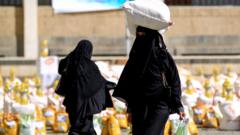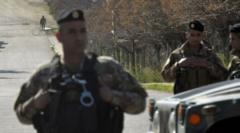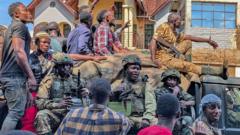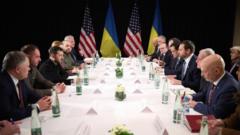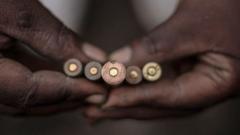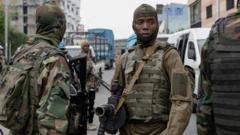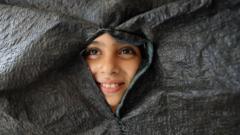This situation highlights the ongoing struggle faced by the Democratic Republic of Congo as rebels seize control, igniting fears of an expanded conflict.
**Renewed Turmoil in Goma: M23 Rebels Capture Key City Amid Catastrophic Losses**

**Renewed Turmoil in Goma: M23 Rebels Capture Key City Amid Catastrophic Losses**
As Goma mourns nearly 3,000 casualties, the region grapples with a surge in violence and humanitarian crises.
Mechanical diggers and volunteers have been racing against time to prepare trenches in the city of Goma, Democratic Republic of Congo, after a week of horrific clashes that claimed nearly 3,000 lives. The violence ensued as M23, a rebel group reportedly backed by Rwanda, captured this strategically significant city, plunging the region into chaos.
Humanitarian workers have described the scene as devastating; volunteers dressed in simple clothing, and protective gear worked tirelessly to honor the dead while grappling with the overwhelming stench of decay. Myriam Favier, head of the International Committee of the Red Cross, remarked, "We have days of mass burials ahead of us," indicating the extent of the tragedy.
According to early assessments by the UN peacekeeping mission in eastern Congo, last week's violence is among the deadliest the nation has witnessed in recent decades. For over 30 years, various conflicts driven by ethnic tensions and competition for mineral and land resources have shaped Congo’s turbulent landscape. However, the scale of this massacre is particularly alarming and underscores the precarious security climate.
While cessation of hostilities has reportedly taken hold in Goma in recent days, the aftermath of M23's conquest of the city raises urgent concerns about a potential larger scale war involving Congo, Rwanda, and their associated allies. The eruption of violence has not only taken a severe toll on human life but also threatens to send ripples of instability throughout the region.
As international observers look on, the humanitarian disaster begs for intervention to prevent further loss of life and escalation of conflict, marking yet another chapter in the enduring struggle of the Democratic Republic of Congo and its people.
Humanitarian workers have described the scene as devastating; volunteers dressed in simple clothing, and protective gear worked tirelessly to honor the dead while grappling with the overwhelming stench of decay. Myriam Favier, head of the International Committee of the Red Cross, remarked, "We have days of mass burials ahead of us," indicating the extent of the tragedy.
According to early assessments by the UN peacekeeping mission in eastern Congo, last week's violence is among the deadliest the nation has witnessed in recent decades. For over 30 years, various conflicts driven by ethnic tensions and competition for mineral and land resources have shaped Congo’s turbulent landscape. However, the scale of this massacre is particularly alarming and underscores the precarious security climate.
While cessation of hostilities has reportedly taken hold in Goma in recent days, the aftermath of M23's conquest of the city raises urgent concerns about a potential larger scale war involving Congo, Rwanda, and their associated allies. The eruption of violence has not only taken a severe toll on human life but also threatens to send ripples of instability throughout the region.
As international observers look on, the humanitarian disaster begs for intervention to prevent further loss of life and escalation of conflict, marking yet another chapter in the enduring struggle of the Democratic Republic of Congo and its people.

